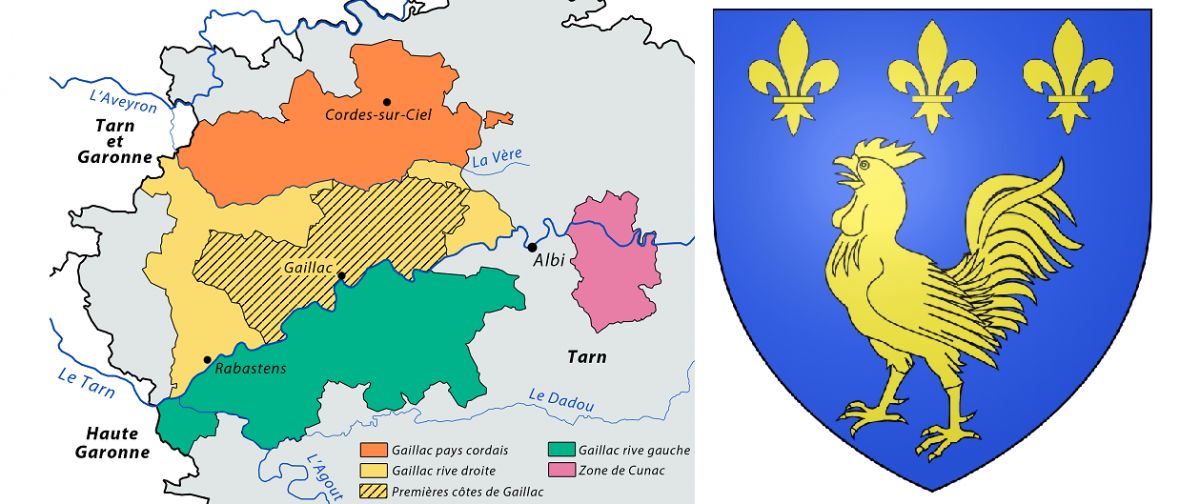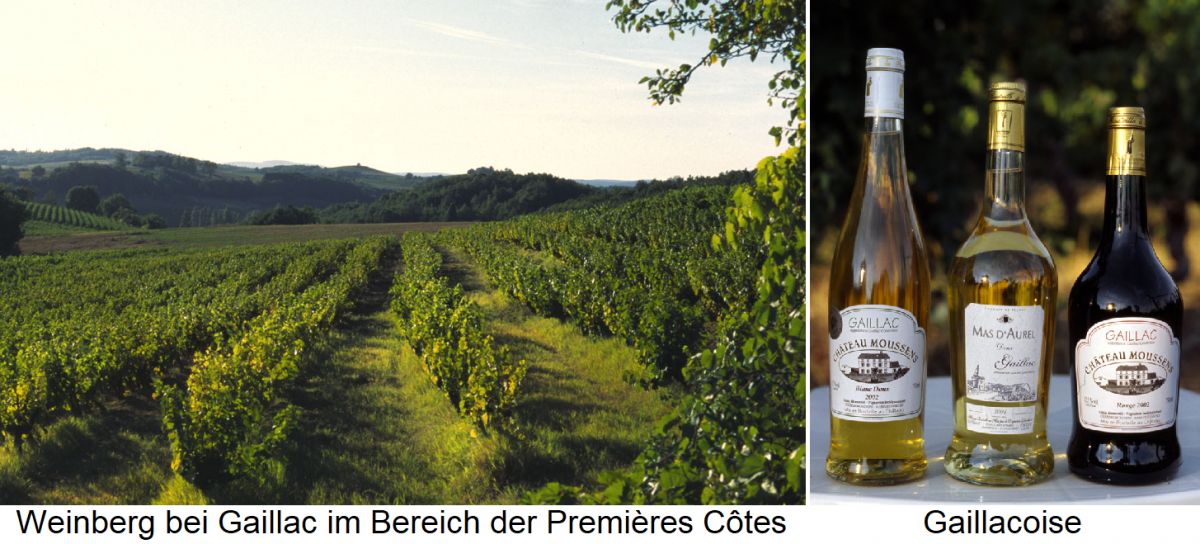Results
2,284 Results
Loading more Results ...
Loading more Results ...
South-west France France
Gaillac AOC
| Gaillac AOC |
Description to Gaillac AOC
The appellation named after the small town of the same name is located in the east of the wine-growing region of south-west France. Gaillac is one of the oldest wine-growing regions in France. Viticulture has been practised here by the Romans since at least the 1st century. However, it is possible that the Celts (Gauls) were already growing grapes before that. It came to a standstill during the Migration Period and was only re-established in the 10th century by the Benedictine monks of the Saint-Michel-de-Gaillac monastery. In the 13th century, the Count of Toulouse Raymond VII issued a decree for a controlled designation of origin for his wine region. As early as the 12th century, the wine was exported to northern Europe, particularly England, where it enjoyed great popularity. The Aquitanian poet Auger Galhard (1540-1593) praised the sparkling wine long before the invention of champagne. Until the middle of the 20th century, they specialised in sweet white wines, but then they also began to produce rosé and red wines.

The trademark is the cockerel with three lilies from the Gaillac coat of arms, which is why the wines used to be called "Vins du Coq".
Vineyards
The vineyards cover around 3,500 hectares north of Toulouse in the Tarn department in the valley of the river Gaillac. This is just over a third of the 9,000 hectares of vineyards in the department. The area is divided into the lower slopes with clay-limestone soils, the higher sites of the Cordes plateau on highly calcareous soils on the right bank and the gravel-sand zones on the left bank of the Tarn. The Gaillac area has very special climatic conditions. The climate is neither Mediterranean nor Atlantic, but more continental in character. Summers are hot and dry, with rain mainly falling between September and April. Another special feature is the warm east wind Autan.

Gaillac wines are bottled in the special "Gaillacoise" bottle shape. Since the 2004 vintage, there has been a standardised shape (medium-sized bottle) as a compromise between the shorter red wine bottle (right) and the slimmer white wine bottle (left).
Appellations
There are a variety of appellation designations. Gaillac produces 75% dry red and rosé wines, as well as white wines. The red wine is blended from at least 60% Duras, Fer, Gamay and Syrah, as well as a maximum of 40% Cabernet Sauvignon, Cabernet Franc and Merlot. The rosé is produced in a similar way. The white wine is blended from the Len de l'El and/or Sauvignon Blanc varieties, as well as Mauzac Blanc, Mauzac Rosé, Sémillon, Muscadelle and Ondenc.
The naturally sweet white wines are marketed under Gaillac Doux (the former appellation names Gaillac Liquoreux and Gaillac Moelleux are no longer authorised). These must have at least 70 g/l residual sugar. Under the designation Gaillac Prèmieres Côtes, predominantly dry but also sweet white wines are produced from 11 communes on designated limestone slopes. The former Gaillac Sec Perlé for slightly sparkling wines has been abandoned. Several appellations were created for sparkling wines according to the production method (see also under Méthode rurale).
Sparkling wines
The lightly sparkling white and rosé wines produced under Gaillac Mousseux Méthode Gaillacoise are a speciality. The wines only undergo a single fermentation. There is also the sweet version Gaillac Mousseux Méthode Gaillacoise Doux with at least 45 g/l residual sugar. Sparkling wines in white and rosé are produced using the champagne method under the name Gaillac Mousseux Méthode Deuxième Fermentation. Another speciality is the "Vin de Voile" (voile = veil), which is produced in the style of a Vin Jaune. The name is derived from the fine layer of yeast in the wine.
Producers
Well-known producers in the area include Domaine des Bouscaillous, Château de Branes, Domaine Jean Cros, Château d'Escabes, Domaine de Labarthe, CV de Labastide-de-Levis, Château Montels, Domaine du Moulin, Domaine de Rieux, Domaine Rotier, Domaine des Terrisses and Domaine de Vayssette.
Map: By Cyril5555 - Own work, CC BY-SA 3.0, Link
Coat of arms: By Syryatsu - Own work, Public domain, Link
Vineyard: By BerndtF - Own work, CC BY-SA 3.0, Link
Bottles: By Berndt Fernow - Own work, CC BY-SA 3 .0, Link
Recent wines 35
 Domaine Bosc Long SAS
— South-west France
2019 Gaillac AOC Braucol "Elevé en fût de chêne"
86 WP
very good
9.30 €
Domaine Bosc Long SAS
— South-west France
2019 Gaillac AOC Braucol "Elevé en fût de chêne"
86 WP
very good
9.30 €

 Domaine Bosc Long SAS
— South-west France
2020 Gaillac AOC "Renaissanca"
87 WP
very good
8.90 €
Domaine Bosc Long SAS
— South-west France
2020 Gaillac AOC "Renaissanca"
87 WP
very good
8.90 €

 Domaine Bosc Long SAS
— South-west France
2022 Gaillac AOC "Cuvée du Dôme" blanc
86 WP
very good
6.00 €
Domaine Bosc Long SAS
— South-west France
2022 Gaillac AOC "Cuvée du Dôme" blanc
86 WP
very good
6.00 €

 Domaine Bosc Long SAS
— South-west France
2018 Gaillac AOC Syrah "Elevé en fût de chêne"
84 WP
good
9.30 €
Domaine Bosc Long SAS
— South-west France
2018 Gaillac AOC Syrah "Elevé en fût de chêne"
84 WP
good
9.30 €

More information in the magazine
- Plaimont - The vine rescuers from south-west France Advertisement
- Good Bordeaux doesn't have to be expensive! Crus Bourgeois
- Paradisiacal times! Tasting: European sparkling wines for the festive season
- Liv-ex classification: The fine wine market 2023 France is the measure of all things
- Domaine Combier Collection of the Year 2022 - Rhône
- The collections and discoveries of the year 2022/2023 tasting season
- Social responsibility in the name of wine In Focus: Vignerons Engagés
- AB, Vignerons Engagés, HVE, Terra Vitis: what are the differences? Organic certifications for French wine
- A lot of power for little money In Focus: Côtes du Rhône Villages Rouge
- Saving your account with pleasure In Focus: Crozes-Hermitage